3-Way Low Profile CPU Cooling Shoot-Out: Reeven, Phanteks, & Noctua
by E. Fylladitakis on January 18, 2017 8:00 AM EST- Posted in
- Cases/Cooling/PSUs
- Noctua
- Phanteks
- Cooler
- Reeven
The Phanteks PH-TC12LS
We received the Phanteks TC12LS inside a dark cardboard box with an abstract aesthetic theme, mostly based on schematic drawings of the cooler itself. Considering the size of the cooler, the box is large, with excessive layers of polystyrene foam for protection found on the inside. Inside the box we found four manuals, one for each of the most popular languages in the regions that the cooler is being marketed into, the necessary mounting hardware, and a syringe with Phanteks PH-NDC thermal compound that should last for at least three or four applications.
The Phanteks TC12LS features a narrow, dense array of black aluminum fins, much like the one we saw on Steropes, yet is even smaller. The fins are relatively thin but strong, with their sides rolled so that they support each other, virtually amassing together into a single strong construct. There are small gaps towards the center of the array to allow for a screwdriver to go through for the installation of the cooler, further reducing the surface of the array. Again, the TC12LS is wider than the CPU socket area of small motherboards, but the fin array is high enough to allow for the installation of standard height RAM modules beneath it.
A major marketing point of the TC12LS is its fan. Phanteks is using a full size 120 mm fan, and not just any 120 mm fan, but the PH-F120MP, one of their more advanced high performance designs. The PH-F120MP is a high static pressure design that may be quite a bit of an overkill for the narrow heatsink of the TC12LS, but should maintain good performance at lower RPMs.
Six 6 mm thick nickel-plated copper heatpipes exit the small base of the TC12LS, entering the fin array from one side. Rounded metallic caps cover their endings, mostly for aesthetic purposes.
The base of the TC12LS is not solid. A close inspection reveals that it comprises of two parts, the copper base and an aluminum top, with the heatpipes sandwiched between them. The aluminum top is flat and only meant to offer mechanical cohesion and mounting functionality, not to directly aid the thermal performance of the cooler in the slightest. The contact surface is machined well, down to a very smooth, flawless surface.


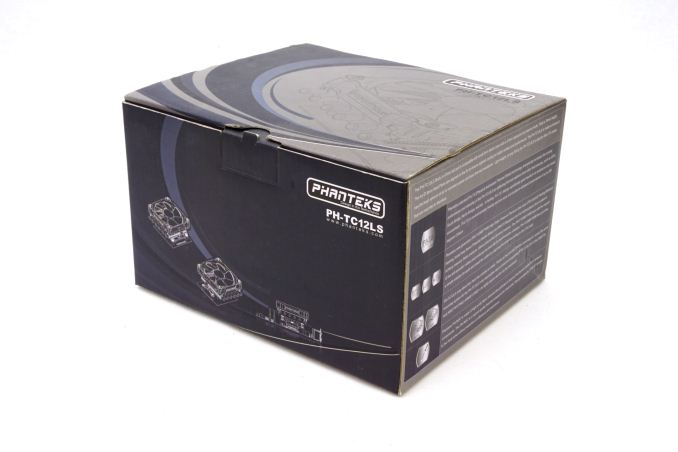
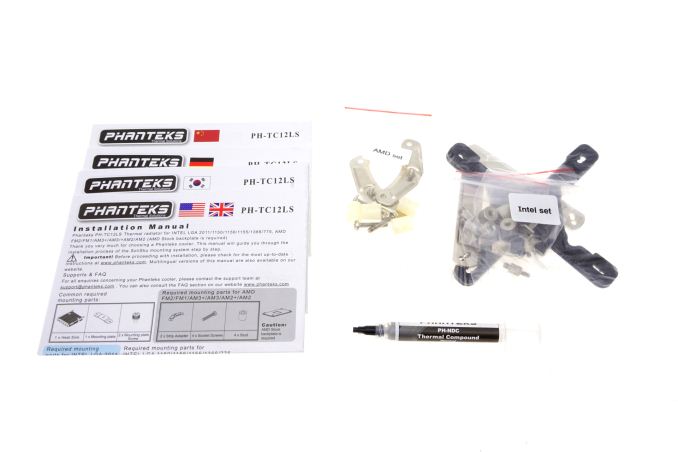

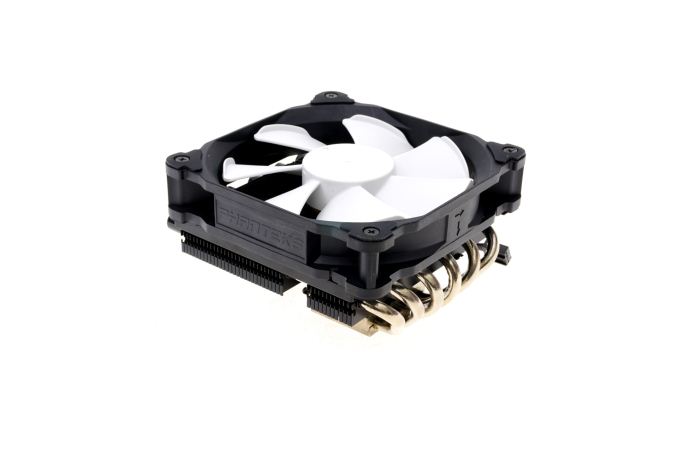
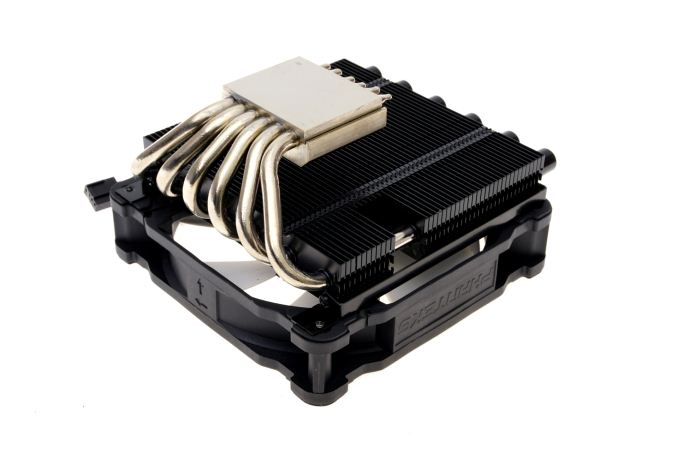
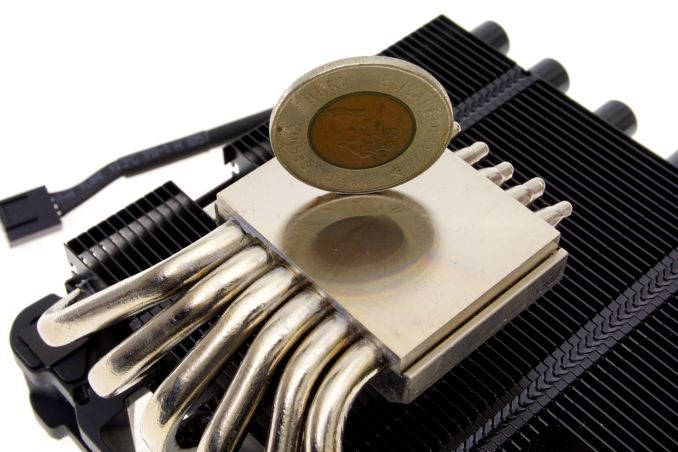








43 Comments
View All Comments
wolfemane - Wednesday, January 18, 2017 - link
This is from my personal experience only, but the L9i didnt cool much better than a stock Intel cooler. It just did it much quieter. I had one on an i3-6100 in a node 202 build and in a Bitspheonix prodogymitx case. I then swapped the 6100 for a 6600k and that was beyond the l9is capabilities in either case. But that was to be expected. Even noctua doesn't recommend the L9i for anything more than 65w unless in a very well ventilated case.
xenol - Wednesday, January 18, 2017 - link
I would've liked to see the heatsinks installed on a system in order to gauge how it might look on my own builds. Cooling performance is important, but I'm willing to sacrifice that if these coolers make it a pain to work on my computer.bigboxes - Wednesday, January 18, 2017 - link
I've got an AXP-200R in my HTPC. I didn't need to go that low of profile, but the huge fan is super quiet and perfect for my application. At 73mm of height clearance I'd think that the Thermalright model would have been in your review.AXP-200R website: http://thermalright.com/product/axp-200r/
AXP-200R in use: http://i256.photobucket.com/albums/hh175/bigboxes/...
stlouis1 - Thursday, January 19, 2017 - link
I've been using AXP-100's as my go to for small form factor builds. It would have actually been nice to see the AXP-100/200 in this review for comparison as the Thermalright options have become hard to acquire in Canada (not sure about elsewhere)genzai - Wednesday, January 18, 2017 - link
Can you add a bit more pertinent info? Like full socket compatibility. (2011.3?)Also can you talk about Rack U height as that is another place LP coolers are used. What is the minimum RU these coolers would fit?
Thanks
Ranger1065 - Thursday, January 19, 2017 - link
Good heavens Anandtech, a new article! Don't overdo it now. It seems to me more effort is expended on Tweets these days. Interesting read though.colonelclaw - Thursday, January 19, 2017 - link
A word of caution to those of you putting together a mini-ITX build - I had to return 3 coolers as they wouldn't fit on an Asus MAXIMUS VIII IMPACT. In all 3 cases, it wasn't because the cooler was too tall (I did measure the height available), but because the cooling pipes or whatnot would hit components on the motherboard.I can't speak for other motherboards, but the components on the Asus are so tightly packed in and all around the CPU socket, that available width is just as important.
zodiacfml - Thursday, January 19, 2017 - link
awesome performance but too big and pricey. the Reeven seems to be good value here as it is tiny compared to a Hyper 212 evo.Voldenuit - Thursday, January 19, 2017 - link
Any VRM temperature measurements? And comparison to tower coolers? One of the advantages of top down coolers compared to conventional towers is their cooling of motherboard components, so would be interested to see.losonn - Saturday, January 21, 2017 - link
Any chance of updating this roundup with results from the significantly more relevant Noctua NH-L9x65?The NH-L9x65 is a comparable size / weight / height / price to both the Reeven & Phanteks coolers featured here where the NH-C14S is *double* the height and price of the other coolers...